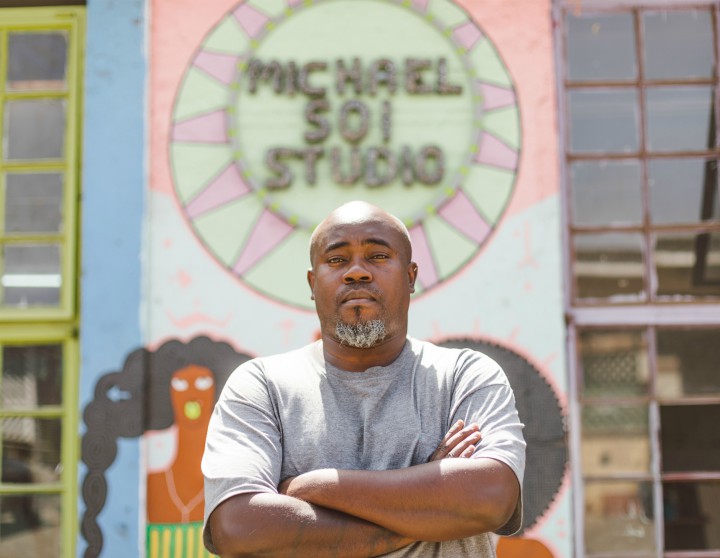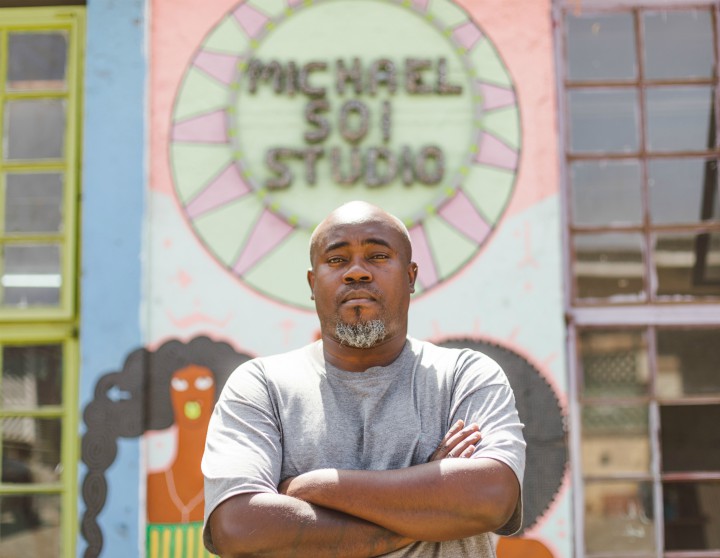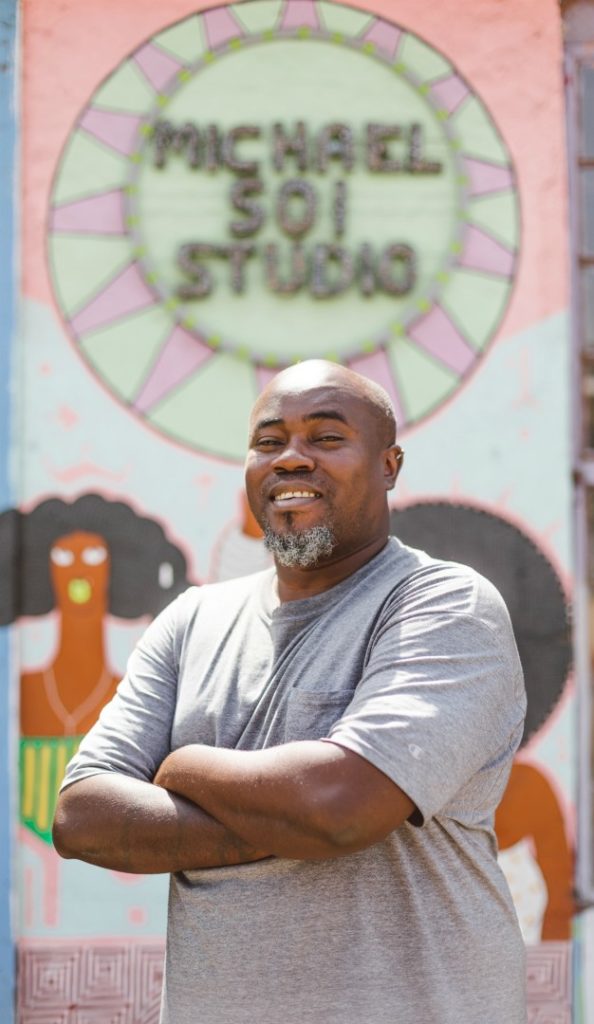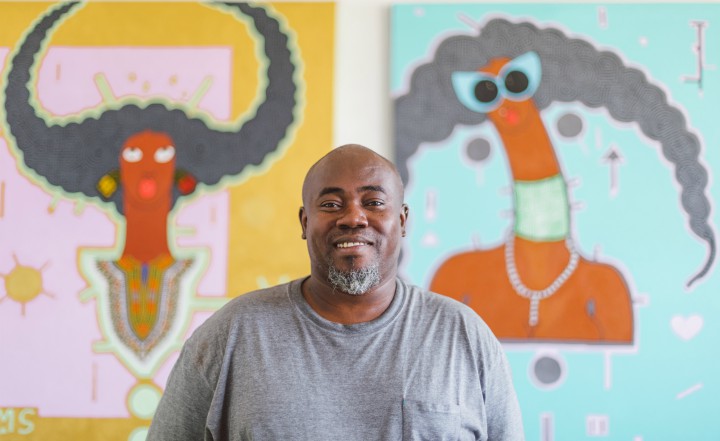INSPIRATION
Behind the Brush: Our 15 Minutes With Michael Soi

The Kenyan artist, best known for his iconic bags as well as his satirical take on society through his art, talks to Nomad about documenting issues that make people uncomfortable, surviving (or not) freezing temperatures in Austria, and travelling the rest of the world by the time he’s 50.

Photo: Peter Ndung’u
How did you get started?
I’m a modest painter who, unlike many people, grew up knowing exactly what I wanted to do with my life. My father is a painter so I [was] exposed to art from a very early age. In places like Kenya, parents don’t take their children pursuing the arts very seriously, including parents who are artists themselves. I consider June 6, 1995, as the day I became a ‘professional’ artist. This was the time when I had completed my formal training in the arts and entered the artworld with a lot of confidence, thinking I was going to be the best thing since sliced bread. I quickly realised that nobody cares about your formal education, what matters is how hard you are willing to work. In that year I joined the newly-founded Kuona Trust, which was a free space for artists to do their work within an environment of people who take them seriously.
What motivates your personal artform?
I consider myself to be a documenting artist. I don’t walk around with cameras, I will go and sit in different spaces within Nairobi and observe people’s behaviour. Unfortunately, the subjects that I choose to focus on often [make people] uncomfortable. People tend to only talk about the nice or obvious things that a location is known for, but not some of the underlying issues that also exist in those spaces. One example is the sex tourism industry in Kenya. I am interested in the reasons behind both sides of the issue and in capturing the economic and social motivations that bring people into that specific industry. The paintings I have done depicting the ways African men treat women have also caused a backlash, with some people finding the art … demeaning. However, this is not the case; the art is about documenting things I have observed in my surroundings – among the very wealthy and the very poor.

Photo: Peter Ndung’u
How is your work understood abroad?
Not very well for the simple fact that most of what I do focuses on Nairobi. In order to engage with the art and understand it, you need to have lived here and understand how this city operates. Within my work there’s lots of references to things that are uniquely Kenyan, such as matatus, Tusker bottles or different locations within the country that have certain reputations. Therefore, whenever I have international exhibitions, I try to make the body of work more accessible to people outside of Kenya, and so I might focus more on work that has to do with lines and patterns. I also believe in letting the audience interpret what they want from the paintings.
What have been your favourite trips?
I choose my trips very carefully, I never go just for the sake of going. I have been to the US at least nine times, but I think this last trip was the most memorable for me. I did a residency that was made possible by Wangechi Mutu, the famous Brooklyn-based Kenyan artist. I stayed there for three months and got to focus my work around a lot of the issues happening in America at the time such as gentrification, police brutality and the Black Lives Matter movement. As an art student, you hear and learn about different artists from a young age, and so some of my favourite trips have also been getting to go to different galleries such as the Louvre in Paris or to MoMa and the Guggenheim in New York and see the artworks about which I have heard and read for so long.

Photo: Peter Ndung’u
What has been your worst trip?
I had an art show in Vienna, Austria, and I went completely unprepared to deal with winter. I had to return to Nairobi three days later because I could not put up with the cold! People told me to just put on a sweater and a jacket, but what are those things going to do for you in minus 24 degree temperatures?
Has travel been an important part of your life?
I can honestly say that by the age of 30, I had seen half the world. By the age of 50, I think the only places I won’t
have been to will be New Zealand and Australia. The purest form of education you can ever get as a human is travel. You learn and experience things that you can never learn in a classroom or within your usual context. Some of the biggest learning moments I have had have been through encounters with people in the US. I did a road trip from California to New York right across the country, visiting many different states by bus. People get on and off the bus at different intervals, so by the time you reach your destination you have encountered and had conversations with six or seven different people. Something that stood out to me is how much ignorance there is out there about Africa. People only associate Africa with poverty and strife and were amazed that I, an African, could afford to travel and see as much of the world as I have. The thing that is most confusing to them is that I am a Kenyan visual artist who is capable of travelling and surviving entirely off my art.
As told to Wanja Wohoro
For more interviews, click here
Our Top Experiences
SEEN SOMETHING YOU LIKE?
Enquire now and our team will create a custom itinerary tailored to your preferences.

CONTACT
enquiries@nomad.africa
Tel: +254 708 238 738
Purple Nomad Ltd
PO Box 69671 - 00400
Mwanzi Avenue, Nairobi, Kenya



